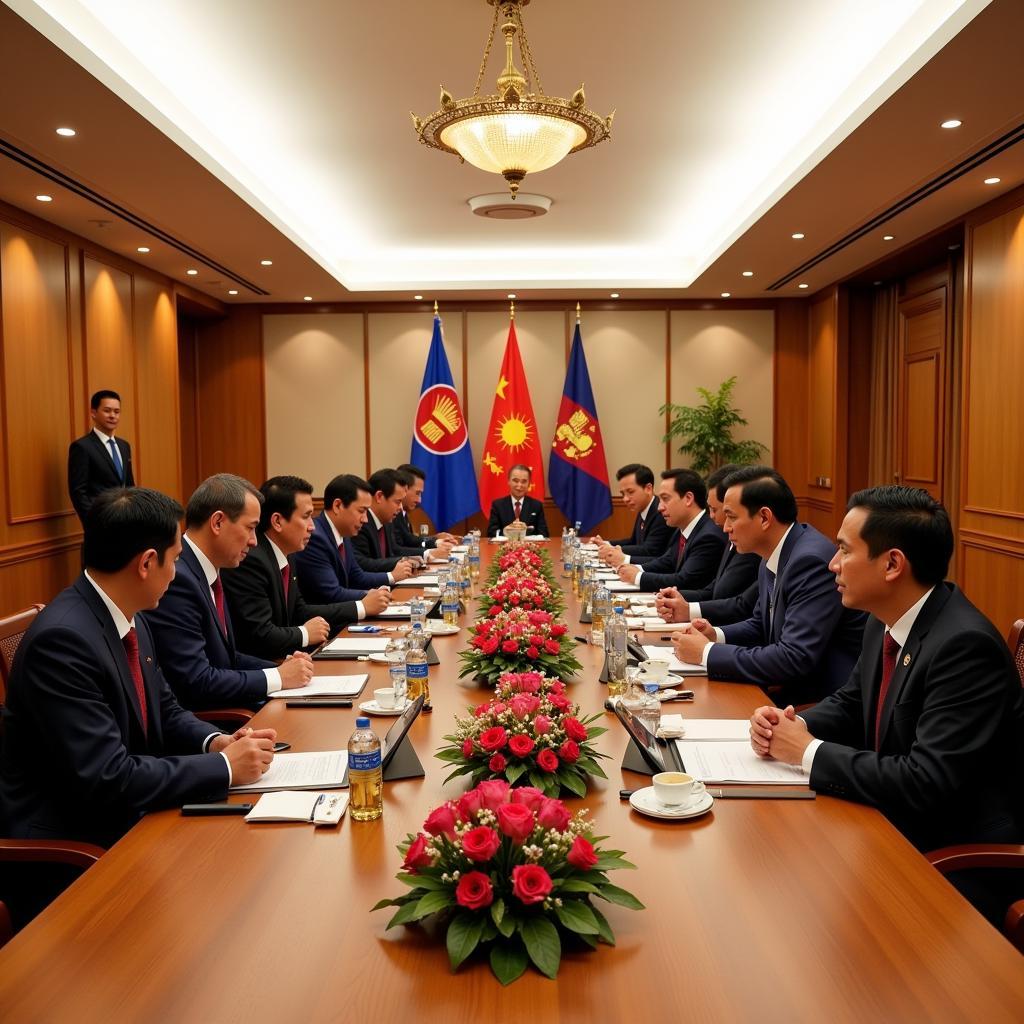Asean Berdiri Pada, or the founding of ASEAN, marks a pivotal moment in Southeast Asian history. On August 8, 1967, five nations—Indonesia, Malaysia, the Philippines, Singapore, and Thailand—signed the Bangkok Declaration, giving birth to the Association of Southeast Asian Nations (ASEAN). This act of unity laid the groundwork for regional cooperation and integration, shaping the political, economic, and social landscape of Southeast Asia for decades to come.
Understanding the Significance of “ASEAN Berdiri Pada”
The phrase “ASEAN berdiri pada” encapsulates more than just a date. It represents a shared vision for peace, stability, and prosperity in a region often marked by conflict and diversity. The signing of the Bangkok Declaration signified a commitment to collaborative problem-solving, mutual respect, and the peaceful resolution of disputes. This commitment, born out of the turbulent post-colonial era, has been instrumental in transforming Southeast Asia into a dynamic and increasingly integrated region.
The Historical Context of ASEAN’s Formation
Understanding the context surrounding “ASEAN berdiri pada” is crucial to appreciating its impact. The Cold War was at its height, and Southeast Asia was a battleground for ideological and geopolitical rivalries. The region was grappling with the legacy of colonialism, internal conflicts, and economic underdevelopment. The formation of ASEAN was a bold step towards regional self-determination and a rejection of external interference. The founding fathers envisioned a regional organization that could promote peace and stability, enabling member states to focus on nation-building and economic development.
ASEAN’s Evolution Since “ASEAN Berdiri Pada”
Since its inception, ASEAN has expanded beyond its original five members to include Brunei Darussalam, Cambodia, Laos, Myanmar, and Vietnam. This expansion reflects the growing recognition of ASEAN’s role as a platform for regional dialogue and cooperation. The organization has also broadened its scope from primarily political and security concerns to encompass economic, social, and cultural cooperation.
Key Milestones in ASEAN’s Journey
ASEAN’s journey since “ASEAN berdiri pada” has been marked by several key milestones, including the establishment of the ASEAN Free Trade Area (AFTA), the ASEAN Charter, and the ASEAN Community Vision 2025. These initiatives have deepened regional integration and promoted greater cooperation in areas such as trade, investment, education, and culture.
 ASEAN Summit: Leaders of Member States
ASEAN Summit: Leaders of Member States
How ASEAN Berdiri Pada Paved the Way for Regional Integration
The principles enshrined in the Bangkok Declaration, signed on the date remembered as “ASEAN berdiri pada,” laid the foundation for regional integration. The emphasis on mutual respect, non-interference, and peaceful conflict resolution created an environment conducive to cooperation. This has facilitated the development of various regional mechanisms and initiatives aimed at promoting economic integration, strengthening political and security cooperation, and fostering socio-cultural understanding.
The Future of ASEAN
As ASEAN looks towards the future, it faces new challenges and opportunities. The rise of new technologies, climate change, and geopolitical shifts present both risks and possibilities for the region. ASEAN’s ability to adapt and innovate will be crucial to its continued success.
ASEAN’s Role in a Changing World
“ASEAN berdiri pada” reminds us of the organization’s fundamental purpose: to promote peace, stability, and prosperity in Southeast Asia. In a rapidly changing world, ASEAN’s role as a platform for regional dialogue and cooperation becomes even more critical. The organization must continue to strengthen its mechanisms for conflict resolution, promote economic integration, and address emerging challenges such as climate change and cybersecurity.
Conclusion
“ASEAN berdiri pada” is a significant milestone in the history of Southeast Asia. It marks the beginning of a journey towards regional unity and cooperation that has transformed the region. As ASEAN continues to evolve, the principles enshrined in the Bangkok Declaration remain relevant and provide a guiding framework for the organization’s future.
FAQ
- What does “ASEAN berdiri pada” mean?
- When was ASEAN established?
- Who are the founding members of ASEAN?
- What is the purpose of ASEAN?
- How has ASEAN evolved since its inception?
- What are some of the key achievements of ASEAN?
- What are the future challenges and opportunities for ASEAN?
For any support, please contact us at Phone Number: 0369020373, Email: aseanmediadirectory@gmail.com Or visit our address: Ngoc Lien Village, Hiep Hoa, Bac Giang, Vietnam. We have a 24/7 customer support team.